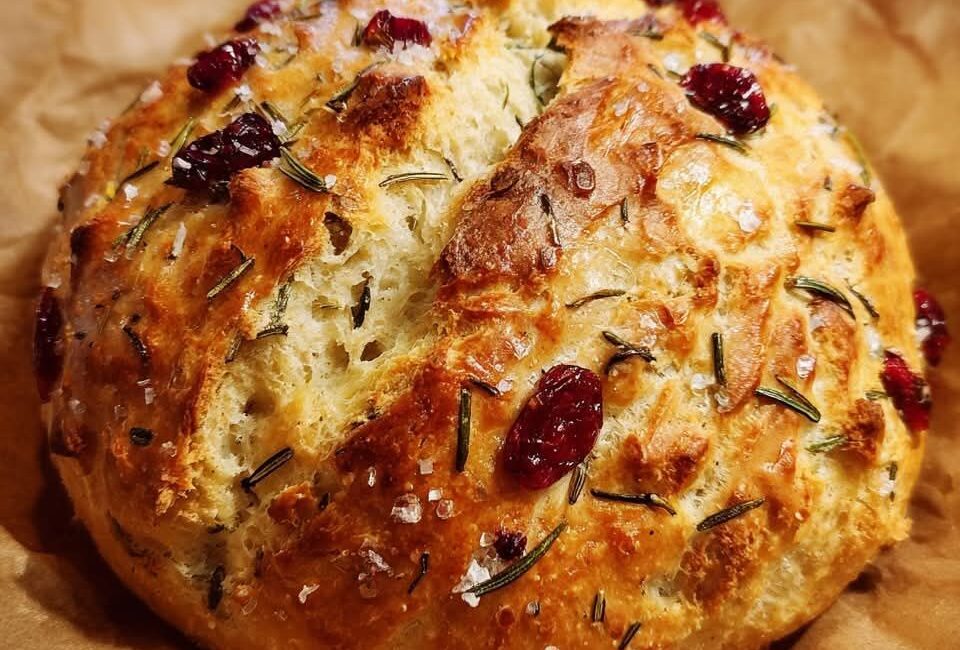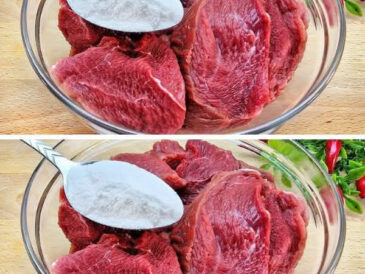Bread is a staple food worldwide, a symbol of comfort and nourishment. While there are countless recipes for bread, few are as satisfying, simple, and flavorful as a no-knead rosemary cranberry bread infused with fragrant olive oil and finished with flaky sea salt. This rustic loaf combines the sweet tartness of cranberries with the herbal aroma of rosemary, all wrapped in a golden crust that crunches beneath your teeth. Best of all, it requires no kneading, making it accessible even to novice bakers.
In this comprehensive article, we will delve into every aspect of this artisan bread: from the science behind no-knead dough, the health benefits of key ingredients, to detailed step-by-step instructions and creative serving ideas. Whether you’re a seasoned baker or just starting, this guide will equip you with everything you need to create a delicious loaf that can become a household favorite.
Table of Contents
- Introduction to No-Knead Bread: A Revolutionary Baking Technique
- Why Rosemary and Cranberries Make the Perfect Pairing
- The Role of Olive Oil & Sea Salt in Artisan Bread
- Nutritional Breakdown and Health Benefits of Ingredients
- Detailed Ingredient Guide and Selection Tips
- Step-by-Step Preparation of No-Knead Rosemary Cranberry Bread
- Baking Essentials: Equipment and Techniques
- Troubleshooting Common Issues in No-Knead Bread
- Creative Variations and Flavor Enhancements
- Serving Suggestions: From Breakfast to Dinner
- Storage Tips to Keep Your Bread Fresh Longer
- Frequently Asked Questions
- Conclusion: Elevate Your Baking with This Simple yet Sophisticated Loaf
1. Introduction to No-Knead Bread: A Revolutionary Baking Technique
Traditional bread baking often intimidates beginners due to the time-consuming kneading process. However, the no-knead bread technique revolutionized home baking by allowing fermentation to develop gluten naturally without physical kneading. Developed and popularized by food writers and chefs alike, no-knead bread uses a wet dough and long fermentation time to create bread with an open crumb, chewy texture, and a crispy crust reminiscent of artisan bakery bread.
How No-Knead Works
Instead of physically kneading the dough to develop gluten networks, the dough rests for 12-18 hours, allowing enzymes and yeast to slowly break down starches and proteins. This results in a well-structured dough that requires minimal handling but yields complex flavors and impressive textures. The long fermentation also enhances digestibility and nutritional availability.
2. Why Rosemary and Cranberries Make the Perfect Pairing
The combination of rosemary and cranberries in bread is both unique and deeply satisfying. Let’s explore why these ingredients complement each other so beautifully.
Rosemary: The Aromatic Herb
Rosemary is a fragrant evergreen herb packed with antioxidants and anti-inflammatory compounds. Its piney, slightly resinous flavor adds depth and complexity to baked goods. In bread, rosemary infuses the dough with an earthy aroma that elevates the eating experience, especially when paired with the subtle sweetness of cranberries.
Cranberries: A Burst of Tart Sweetness
Dried cranberries bring a chewy texture and tartness that balances the savory notes of rosemary and sea salt. Rich in vitamins C and K, dietary fiber, and antioxidants like flavonoids, cranberries contribute not only flavor but also health benefits.
Together, rosemary and cranberries create a harmonious blend of savory, sweet, and herbal flavors that make this bread a standout at any meal.
3. The Role of Olive Oil & Sea Salt in Artisan Bread
Olive Oil: The Heart-Healthy Fat
Olive oil is a staple of Mediterranean cuisine and a powerhouse of monounsaturated fats and antioxidants. Adding olive oil to bread dough enriches the crumb, making it tender and moist, while also imparting subtle fruity notes. Drizzling olive oil on the crust before baking enhances browning and flavor.
Sea Salt: The Finishing Touch
Flaky sea salt is not just for seasoning; its crunchy texture and mineral-rich flavor contrast perfectly with the soft crumb and sweet cranberries. Sprinkling sea salt on top before baking creates bursts of salty flavor that complement the bread’s natural sweetness.
4. Nutritional Breakdown and Health Benefits of Ingredients
Understanding the nutritional value of this bread highlights why it’s more than just delicious.
- All-Purpose Flour: A good source of carbohydrates and energy. Choosing enriched or whole wheat flour can boost fiber and micronutrients.
- Cranberries: Rich in antioxidants, support urinary tract health, and reduce inflammation.
- Rosemary: Contains anti-inflammatory and antimicrobial compounds; may improve digestion.
- Olive Oil: Supports heart health, reduces oxidative stress, and provides healthy fats.
- Sea Salt: Contains essential minerals like magnesium and potassium in trace amounts.
Click page 2 for more




